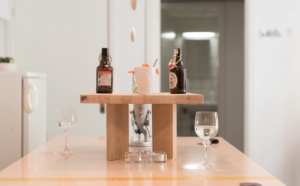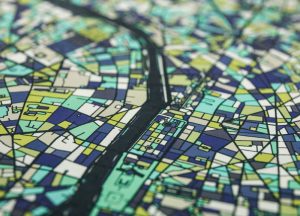Video above depicts demonstration of The Classyfier
I reviewed some of the recommended blogs and websites on generative art and stumbled upon one called The Classifier (2017) by Benedict Hubener, Stephanie Lee, and Kelvyn Marte. It is a table with AI that detects the situation and the sounds of beverages being consumed to choose music that fits the situation accordingly.
The algorithm that generates this art, takes into account the different sound patterns that are characteristic for each drink from pre—trained examples. The creator’s artistic sensibilities are manifest in the algorithm through how well each situation or drink type is detected and the type of music that then ensues to fill the ambiance.

Pictured above: The Classifier
I chose to review this particular art piece because I think it is one that was created for a useful purpose. It can be used to elevate relaxing, improve socializations, and ease events that take place in everyday citizens’ lives. It reminded me that the skills I learned in this class can be used in a similarly useful way. Also, for future projects, I can think more about the usability of my designs and codes for the user and their experiences.
![[OLD FALL 2017] 15-104 • Introduction to Computing for Creative Practice](../../../../wp-content/uploads/2020/08/stop-banner.png)

